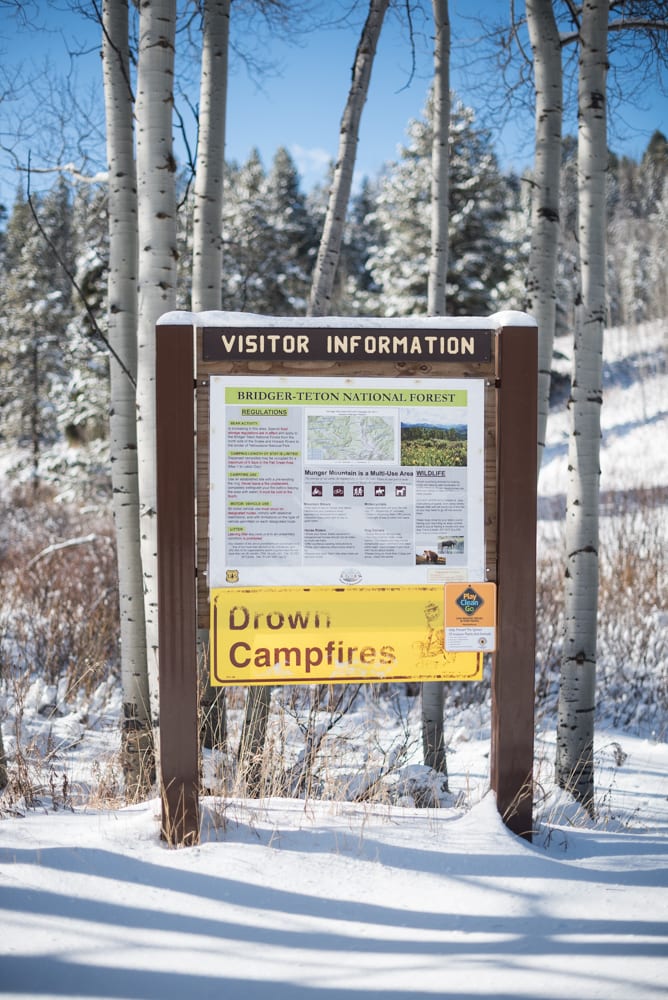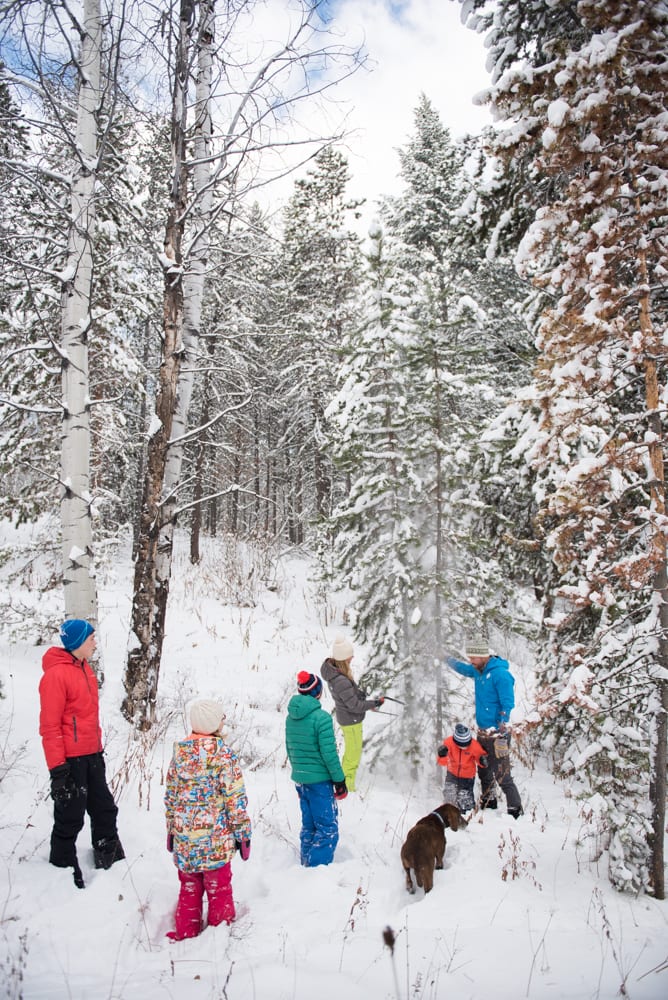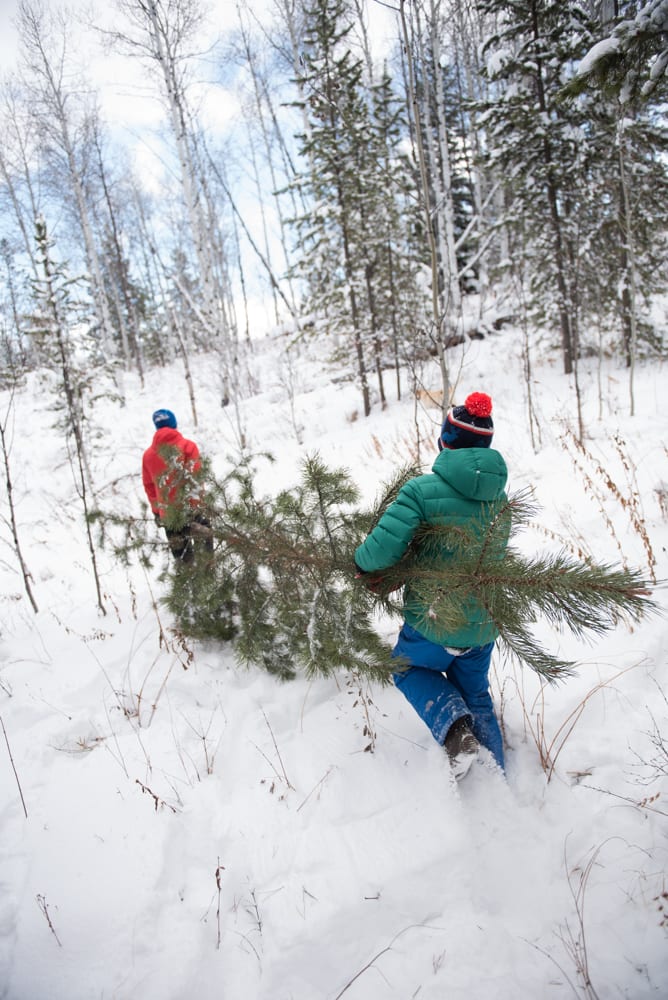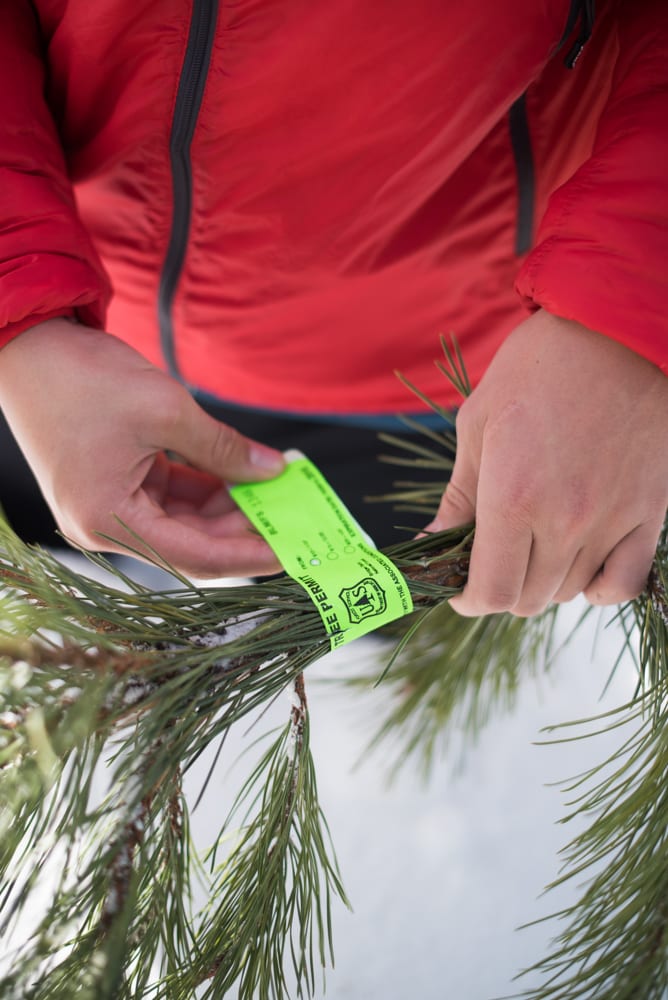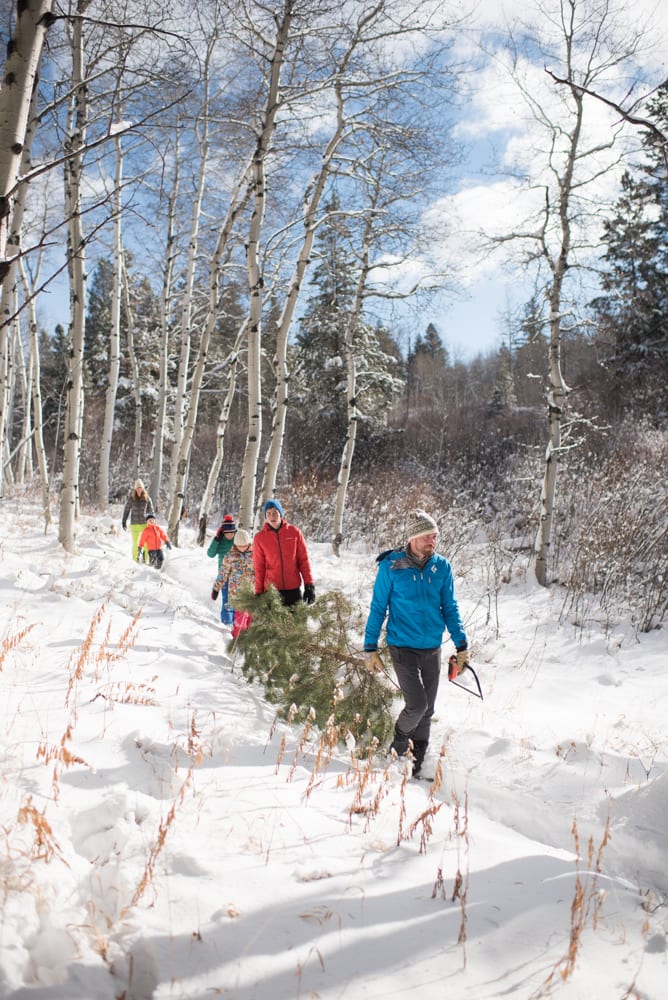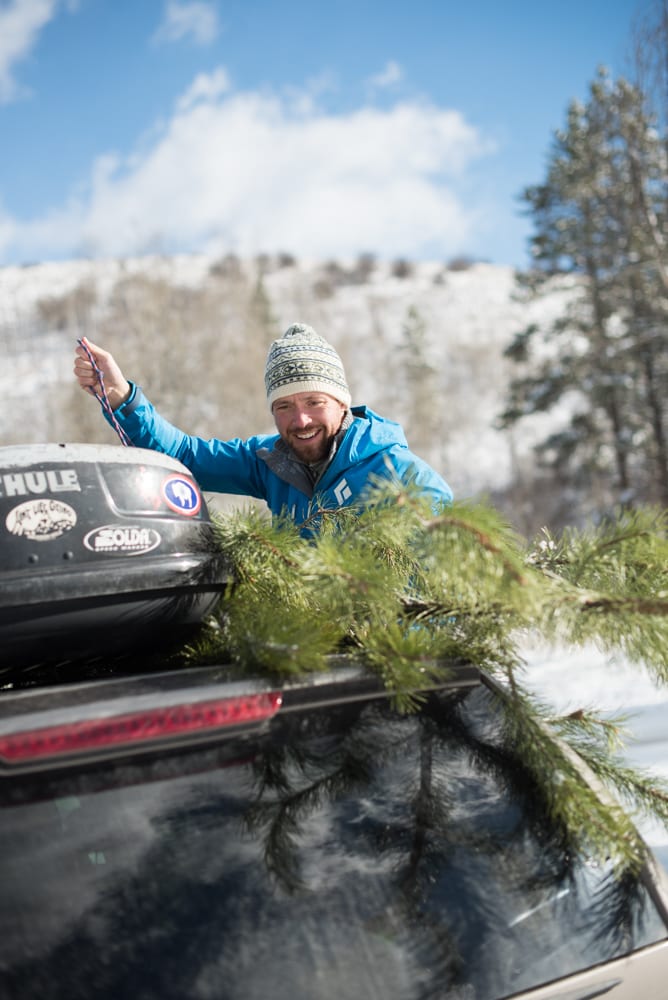It’s the classic Rocky Mountain Christmas; thick, soft flakes of snow drift lazily onto the roof of a cozy cabin, warm from a crackling fire and lit by sparkling lights from a beautiful Christmas tree.
There are a few options for selecting this holiday centerpiece, but a trip into the forest surrounding Jackson Hole is always more rewarding than a stop at the grocery store tree stand. This is a tradition that many families around the valley look forward to in the crisp weeks after Thanksgiving.
Small, unpaved roads wind along frozen creeks and snowy ridges into the trees outside of town. A sturdy vehicle is a must for a wintertime trip into the woods, as are plenty of warm clothes. You won’t regret your steaming thermos of hot cocoa. Leather gloves will keep your hands protected during the cutting process, which is most easily done with a hand saw. They will also keep your hands from getting sap-encrusted while pulling the tree back to your car.
Head out early in the day, leaving plenty of time to hunt for the perfect tree, and extra in case you discover an ideal spot for sledding or snowman construction. A wintertime forest is a magical place. Snow falls silently, a glittering blanket as the earth sleeps. Tracks made by tiny paws dot the pillowy tops of logs and stones.
Taking a tree from the wild is more than a wintry family adventure. When done correctly, it benefits the area’s forests and wildlife. This cherished holiday pleasure is also a way to ensure that Jackson’s forests remain healthy and strong.
“Some people worry that harvesting a tree from the forest is harmful or causes damage to the ecosystem,” says Mary Cernicek, Public Affairs Officer for the Bridger-Teton National Forest. “But it’s actually the opposite. We rely on people harvesting Christmas trees as an important part of our management plans.” Coniferous trees – pine, fir and spruce – are not only ideal holiday decorations, but can also threaten other species of trees if not managed.
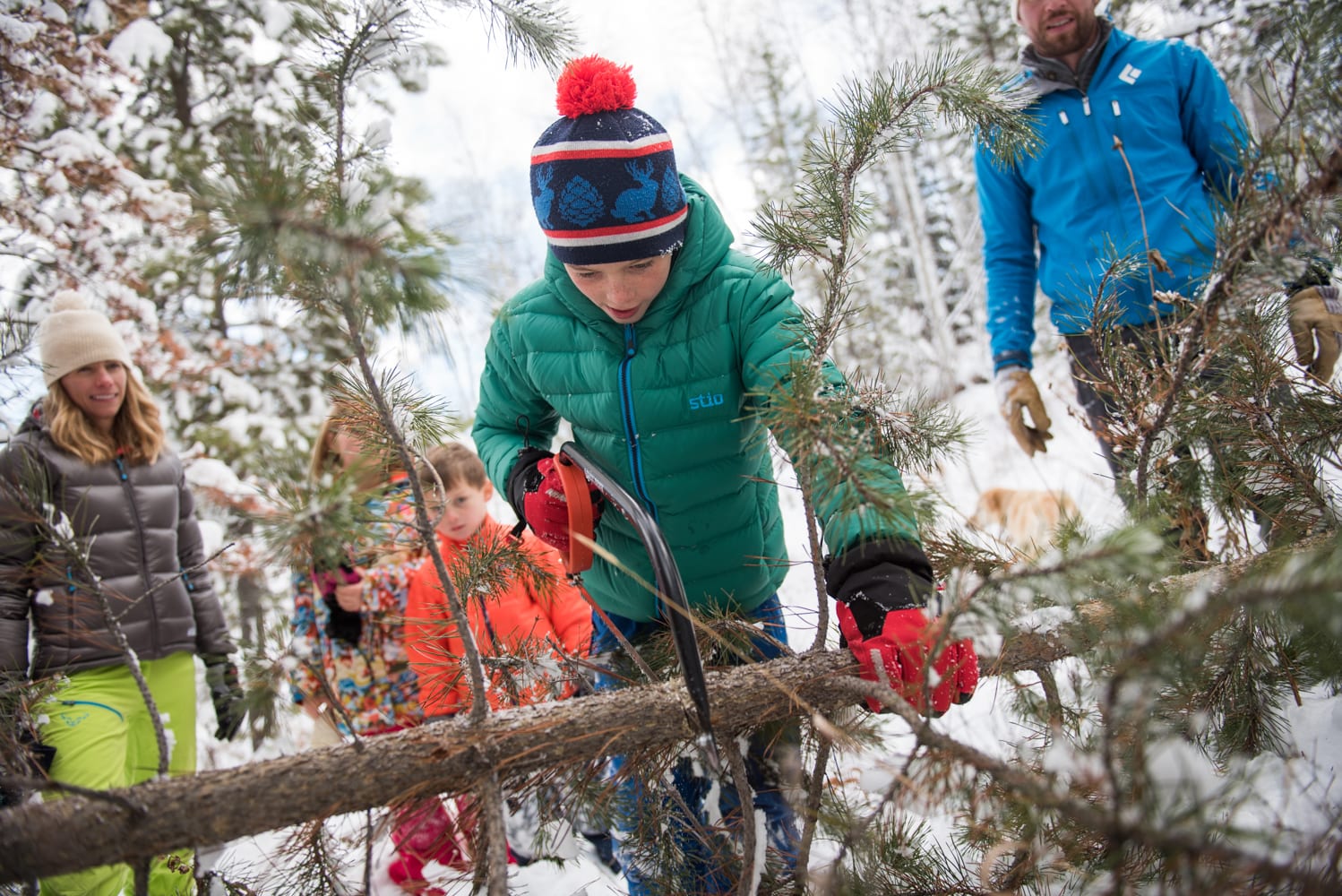
These kinds of trees grow relatively quickly, and can crowd out other native trees, especially aspens. When conifers grow in aspen stands, they devour nutrients and spread thick boughs, depriving aspen saplings of sunlight. Slowly but steadily, the conifers will outcompete the aspens.
“We love letting everyone know that they’re not only getting a unique tree, they’re actually helping out the forest as well as a lot of local wildlife.”
“Aspens are preferred in these areas, primarily because of their importance to native species,” explains Cernicek. “We love letting everyone know that they’re not only getting a unique tree, they’re actually helping out the forest as well as a lot of local wildlife.” Quaking aspen provides homes and food for a spectacular array of Rocky Mountain animals: moose, elk, mule deer, black bear, porcupine, snowshoe hare, beaver, moths and butterflies, small rodents and dozens of kinds of birds.
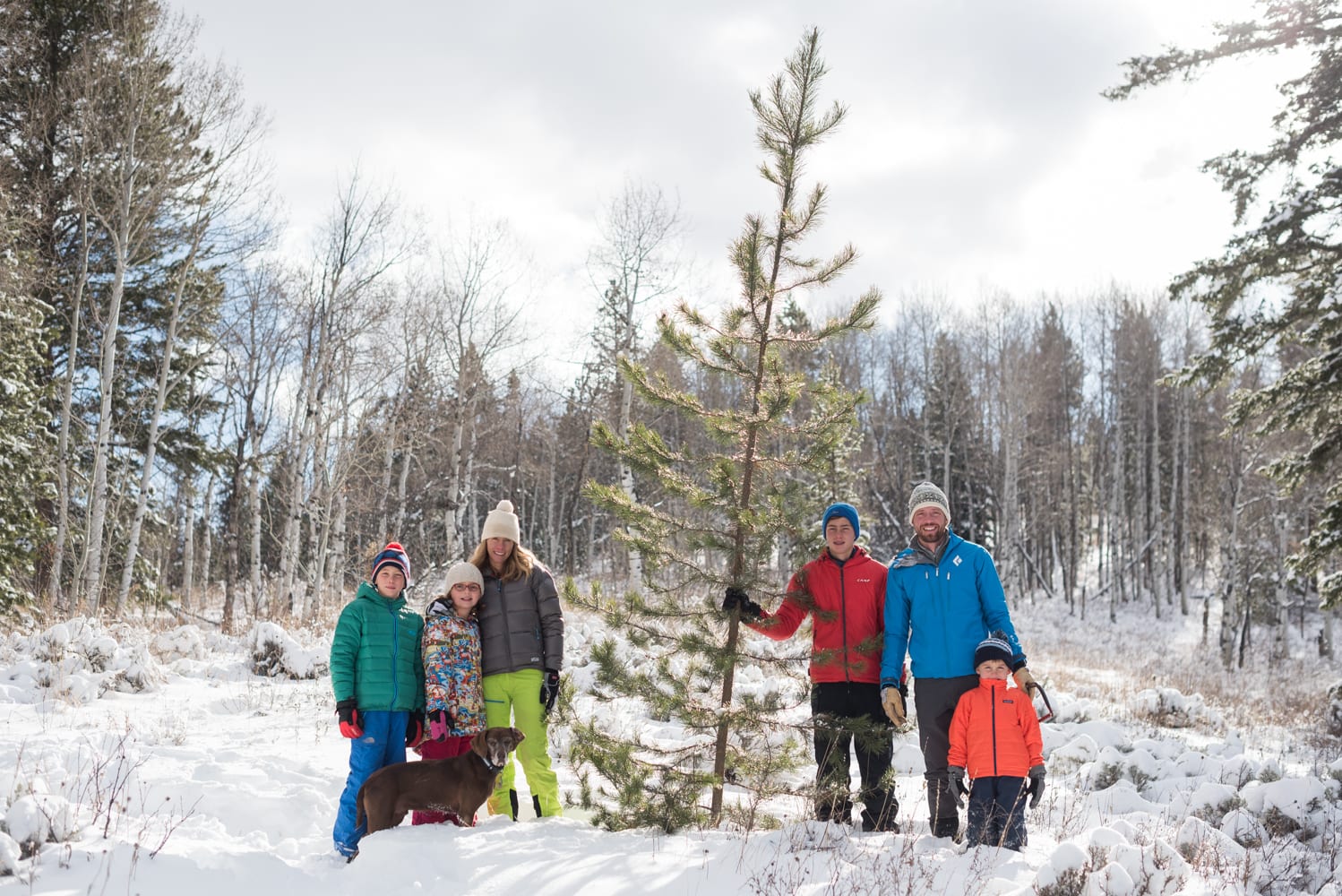
You might be lucky enough to glimpse a few of these local forest residents on your own Christmas tree hunt, especially if you follow the recommendation and find a tree to remove from an aspen stand.
It won’t be tree farm perfect, manicured into a geometrically flawless cone. But it will be unique, and have a rugged, natural beauty.
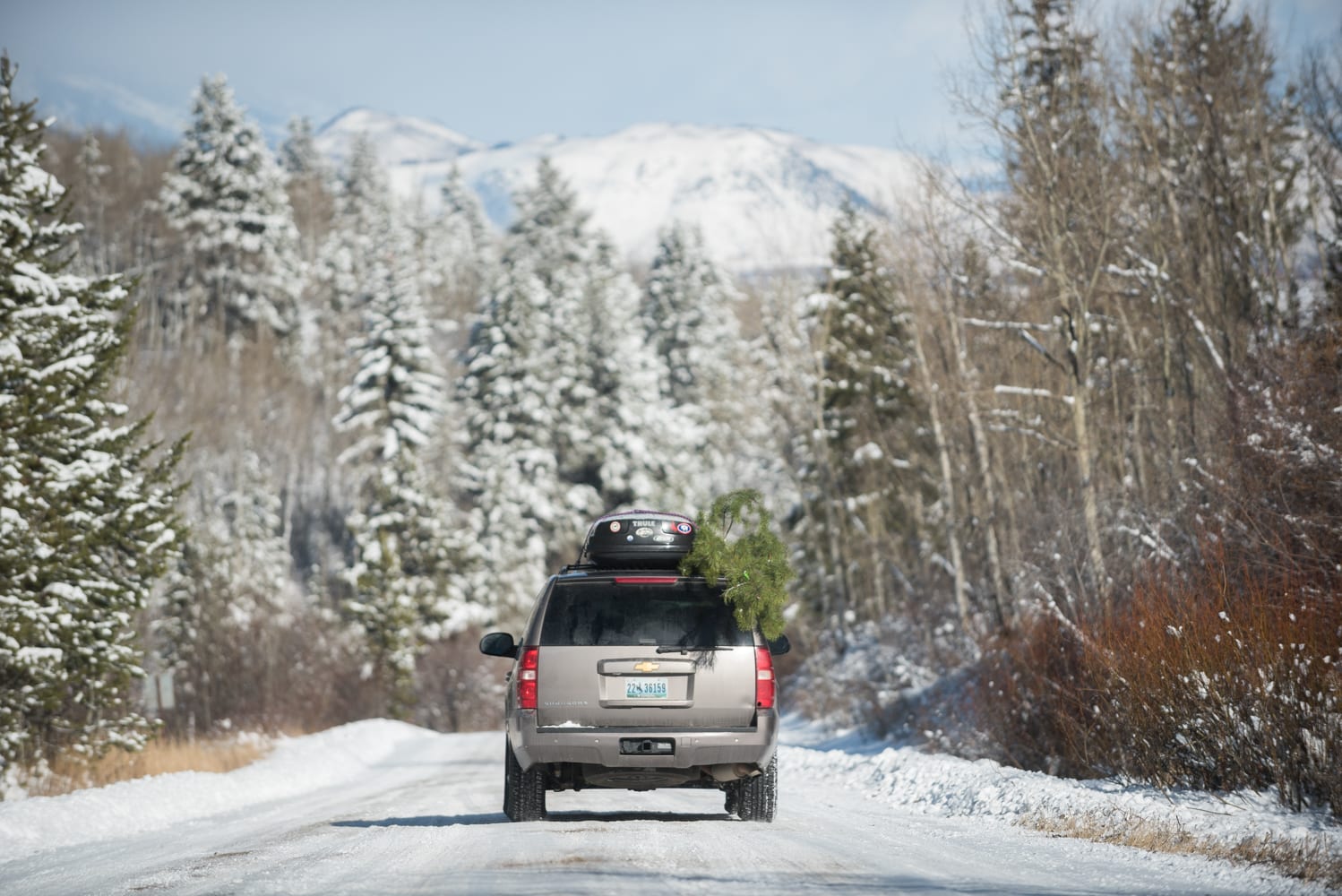
Your living room will smell of fresh pine as you kick back in front of the fire, your fingers turning pink and sticky as you string cranberries and popcorn to drape among its boughs. Colorful packages collect beneath the branches as Christmas draws near. Fully lit and caringly decorated, the tree will not only represent the merriest time of the year, but serve as a reminder of your wonderful snowy adventure in the woods.
Visit the Jackson Hole Visitor Center at 532 North Cache to pickup a tree cutting permit and map of harvest areas.

Images © Taylor Glenn
